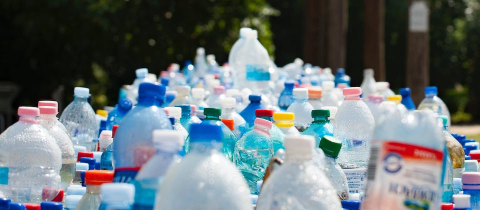Many consumers today are shying away from soft drinks because of legitimate concerns about their sugar or artificial sweetener content. Plain water is the ideal alternative, but a lot of people enjoy the palate tickling action of carbon dioxide bubbles and are looking towards plain carbonated water to satisfy their thirst. This has triggered questions about the safety of this beverage.
Naturally carbonated waters have long been believed to be healthy. Historically, people suffering from kidney stones, arthritis, and "lack of vigour" flocked to spas to partake of the waters. But if you couldn't get to the source, you were out of luck. That is until Joseph Priestley came along. Priestley, who is best known as the discoverer of oxygen, although he never recognized it as an element, lived next to a brewery and was intrigued by the bubbles of carbon dioxide he saw rising in beer. This gave him the idea of artificially carbonating water.
Joseph Black had already shown that carbon dioxide, or "fixed air" as it was called, could be produced by reacting chalk (calcium carbonate) with sulfuric acid. Priestley designed a clever apparatus that linked a glass vessel in which the reagents were mixed to a pig bladder that in turn was connected to a tube leading into a water-filled bottle that sat inverted in a basin of water. The gas was generated, filled the bladder, which was then squeezed to pump pressurized gas through the water. By this method, enough of the gas dissolved to produce an acceptable bubbly beverage. Salts such as sodium carbonate or sodium tartrate could be added to produce "mineral water.
John Nooth, a Scottish physician, wondered why the curative properties of Priestley's water had not been extensively investigated and proposed an answer. The water, Nooth said, had a urinous flavor that people disliked. So he got around the problem by designing an apparatus made totally of glass to carbonate water. Priestley did not take the criticism of his water well and maintained that neither he, nor anyone he ever offered the water to, had ever noted a urine smell or flavor. If Dr. Nooth had found his water tainted, Priestley suggested, it must have been because one of his servants had played a cruel trick and urinated into the water that he brought to Nooth to fill his carbonation apparatus. Priestley had no foundation for this accusation and eventually gave up his attack on Nooth and accepted the Nooth Apparatus as superior to his own. Eventually, Jacob Schweppe, a Swiss inventor scaled up the apparatus and made carbonated water available to all.
Today, if you want to make some carbonated water you don’t need a Nooth apparatus. You can purchase a “SodaStream” device that will automatically add bubbles to your water from a carbon dioxide cylinder. So, is it safe? Yes! The dissolved carbon dioxide does form carbonic acid but the contact time of the carbonated water with teeth is too short to cause any damage to the enamel. There was one small study with the intriguing title, “Carbon dioxide in carbonated beverages induces ghrelin release and increased food consumption in male rats: Implications on the onset of obesity.” Ghrelin is a hormone that increases the appetite. What to make of this? If you have male rats and are concerned about their girth, keep them away from your carbonated water. As far as humans go, the only side effect that might arise from drinking carbonated water is the emission of carbon dioxide gas from either end of the digestive tract.







